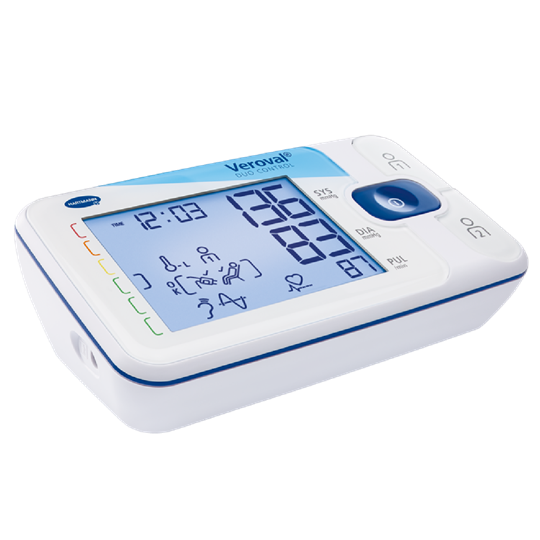معالجة ارتفاع ضغط الدم


بحسب منظمة الصحة العالمية (WHO)، يتسبب ارتفاع ضغط الدم بوفاة واحد من أصل ثمانية أشخاص عالميًا. فلقد زاد انتشار ارتفاع ضغط الدم خلال العقود الأخيرة في أنحاء العالم. وقد أظهرت التقديرات الأخيرة أن ثلث الراشدين تقريبًا من سكان العالم يعانون من ارتفاع ضغط الدم (٣١٫١٪، ١٫٣٩ مليار).١،٢،٣
إنّ ارتفاع ضغط الدم هو الحالة التي يرتفع فيها ضغط الدم إلى مستويات غير صحية. وفي حال بقاء ضغط الدم مرتفعًا بشكل دائم أو لم تتم معالجته بشكل مناسب، فقد يؤدي إلى مضاعفات صحية خطيرة وقد يزيد خطر الإصابة بحالات متعددة خطيرة قد تهدد الحياة، مثل فشل القلب ومرض الكلى المزمن ومرض الشريان التاجي ومرض الشريان المحيطي والسكتة الدماغية والخرف الوعائي. ليس هناك أي مؤشرات أو أعراض لارتفاع ضغط الدم، ولا يتم بالتالي تشخيصه في حالات كثيرة.٤
في الواقع، من المقدّر أنّ ٤٦٪ من الراشدين المصابين بارتفاع ضغط الدم يجهلون أنهم يعانون من هذه الحالة. في المقابل، ١ من أصل ٥ راشدين (٢١٪) تقريبًا مصابين بارتفاع ضغط الدم نجح في السيطرة عليه.٥
في المتوسط، ١ من أصل ٤ راشدين في المنطقة العربية يعاني من ارتفاع ضغط الدم.٦
إذا كان ضغط الدم مرتفعًا جدًا بشكل دائم أو لم تتم معالجته بشكل مناسب، فقد يؤدي إلى مشاكل خطيرة مثل نوبة قلبية أو سكتة دماغية.
لحسن الحظ، هذا ليس قدرًا محتمًا!ارتفاع ضغط الدم هو عملية بطيئة، وغالبًا ما لا يتم رصده إلا عند ظهور مرض خطير. والسبب بسيط: ليس هناك أعراض ملحوظة وواضحة لارتفاع ضغط الدم.لذلك، من المهم قياس ضغط الدم بشكل دوري، يوميًا، إذا أمكن، في المنزل بواسطة جهاز لقياس ضغط الدم دقيق وعالي الجودة.
يمكنك تنزيل الكتيب الذي سيمنحك ١٠ إجابات سهلة الفهم لأهم الأسئلة عن ضغط الدم وحالات ارتفاعه.
1. Mamdouh, H., Alnakhi, W.K., Hussain, H.Y. et al. “Prevalence and associated risk factors of hypertension and pre-hypertension among the adult population: findings from the Dubai Household Survey, 2019.” BMC Cardiovasc Disord 22, 18 (2022). https://doi.org/10.1186/s12872-022-02457-4
2. WHO World Health Organization,. Fact sheets: hypertension [Internet]. Who.int. 2021.Accessed: 2021-05-10, who.int/news-room/fact-sheets/detail/hypertension
3. Kim SJ, Lee J, Jee SH, Nam CM, Chun K, Park IS, Lee SY. Cardiovascular risk factors for incident hypertension in the prehypertensive population. Epidemiol Health. 2010 May 1;32:e2010003. doi: 10.4178/epih/e2010003. PMID: 21191456; PMCID: PMC2984864.
4. World Heart Federation, “Hypertension & Nutrition”, Accessed: 2022-08-22, world-heart-federation.org/wp-content/uploads/2021/09/WHF-Hypertension-Nutrition-infographic-FINAL.pdf
5. WHO World Health Organization,. Fact sheets: hypertension [Internet]. Who.int. 2021, Accessed: 2022-08-22, who.int/news-room/fact-sheets/detail/hypertension
6. WHO World Health Organization Regional Office for the Eastern Mediterranean, “Health and well-being profile of the Eastern Mediterranean Region: An Overview of the health situation in the Region and its countries in 2019”, Accessed: 2022-08-22, https://applications.emro.who.int/docs/9789290223399-eng.pdf ,p75
